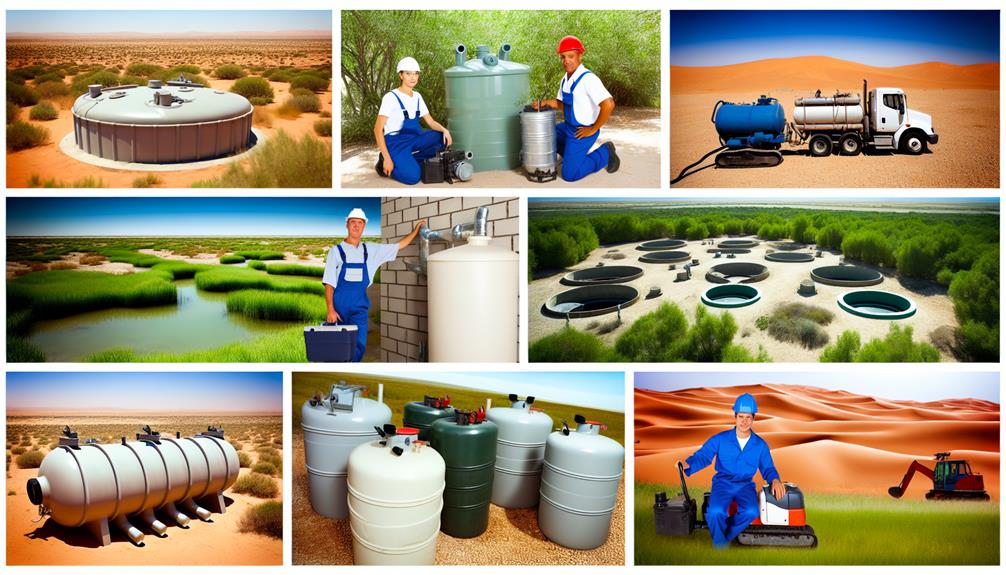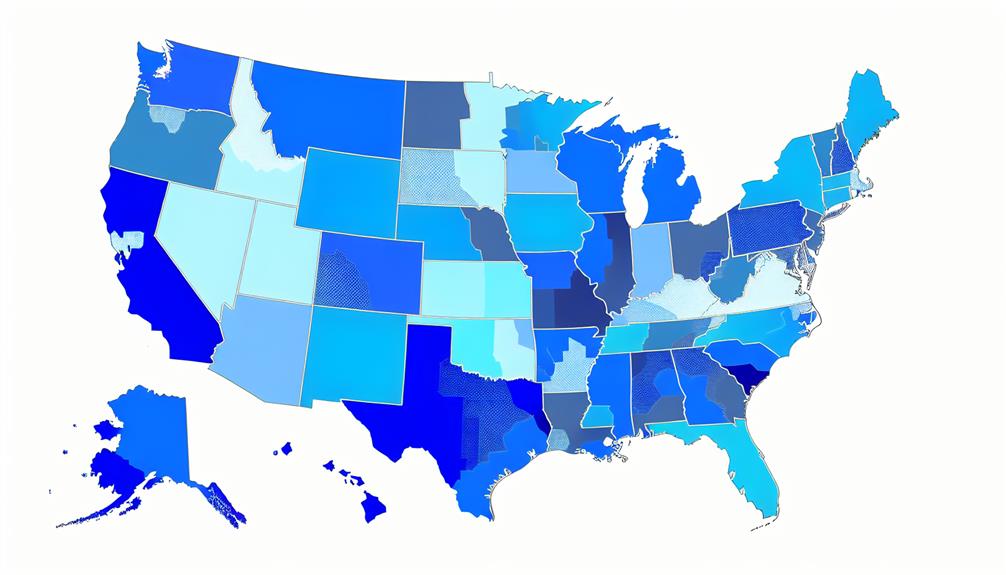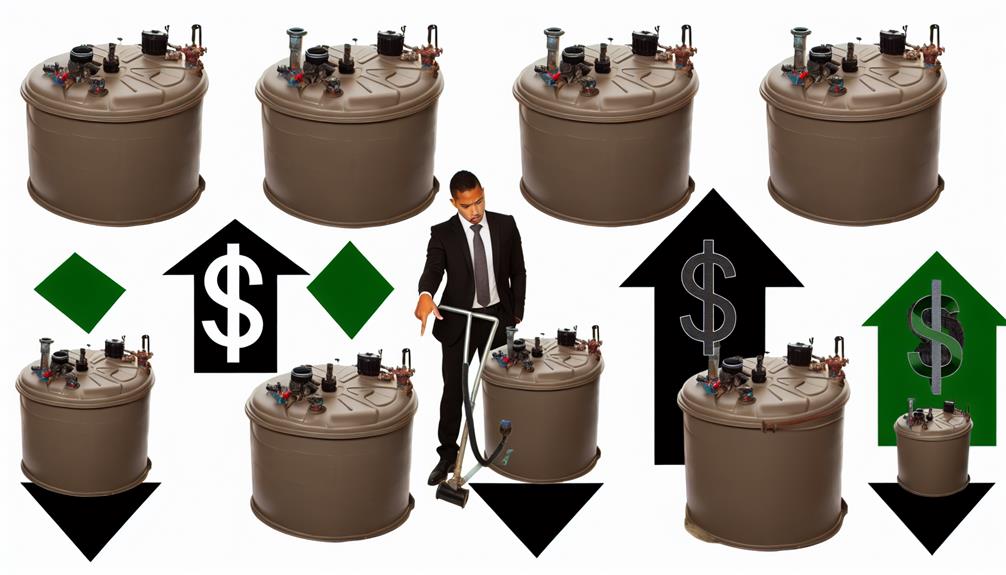Discover how to protect your septic system from breakdown with...
Read MoreYou & Your Septic Tank
Why Does Professional Septic Tank Pumping Cost Vary?
Our professional septic service team offers comprehensive septic tank pumping services to keep your system running smoothly. Get a FREE Quote Today.

Why Does Professional Septic Tank Pumping Cost Vary?
Much like the weather, the cost of professional septic tank pumping can be as unpredictable and variable. You’ve likely noticed that prices can fluctuate greatly, sometimes leaving you scratching your head in confusion. Various factors contribute to these cost variations, including the size of your tank, the frequency of pumping, and even your geographic location.
But why does it matter so much where you live, or how often you pump your tank? Well, let’s unpack this together and explore the intricacies behind the ever-changing price tag of septic tank services.
Key Takeaways
- The lifespan of a septic tank affects the frequency and cost of pumping. Regular pumping prevents the buildup of solids and extends the tank’s lifespan.
- Factors such as tank size, pumping methods, and the complexity of the job can influence the cost of septic tank pumping.
- Geographic location plays a role in the cost of septic tank pumping, with rural areas potentially having increased travel and mileage costs, and urban areas potentially having higher operating costs.
- Assessing pumping frequency is important, as tank capacity and household size impact how often pumping is needed. Larger tanks require less frequent pumping, while smaller tanks and households with more people may require more regular servicing.
Understanding Septic Tank Pumping

In order to fully grasp the intricacies of septic tank pumping, it’s crucial to first understand the mechanics involved in its operation and maintenance. You see, the lifespan of your tank, typically ranging from 15 to 40 years, directly influences the frequency and cost of pumping. Regular pumping helps extend your tank’s lifespan, preventing the buildup of solids that can cause blockages or leaks.
System upgrades are another vital component in comprehending septic tank pumping. Upgrades often include installing risers or filters, improving the tank’s efficiency, and ultimately reducing the frequency of pumping. A riser, for instance, makes the tank more accessible for pumping and maintenance, while a filter prevents solids from entering the drain field, thereby prolonging the system’s lifespan.
Factors Influencing Pumping Cost
While understanding the operation and maintenance of your septic tank is key, it’s equally important to consider the various factors that influence the cost of pumping it.
Two of the most prominent factors are tank size and pumping methods.
Tank size significantly affects the price. Larger tanks require more work, more time, and thus, cost more to pump. For instance, a smaller tank might only need an hour or two of work, while a larger one could take several hours. This increased labor time directly impacts the overall cost.
Pumping methods also play a critical role in determining the price. Traditional methods involve manually digging up the tank, which is labor-intensive and time-consuming. On the other hand, newer, more advanced techniques use machinery to access the tank, which can be quicker but often more expensive due to equipment costs.
It’s also worth noting that the complexity of the job, including the tank’s accessibility and condition, can also influence the price. For example, if your tank is hard to reach or in poor condition, it might cost more to pump.
Understanding these factors will help you anticipate potential costs and plan your budget effectively.
Geographic Cost Differences

Surprisingly, your location can significantly affect the cost of septic tank pumping. This is primarily due to regional pricing disparities and locality-based overheads.
For instance, if you’re in a rural area, travel time and mileage for the pumping service may increase the total cost. On the other hand, urban areas can have higher operating costs, leading to elevated prices.
Regional pricing disparities are a significant factor in cost differences. This is because regions or states have varying standards for waste disposal, which can add to the pumping company’s expenses. If your region requires more stringent measures for septic waste handling, you’ll likely pay more for these additional services.
Locality-based overheads also play a crucial role in cost variations. These overheads encompass a range of expenses, including local taxes, business licensing fees, and insurance costs. They also cover the cost of equipment maintenance and labor. If these costs are high in your locality, they’re likely to be passed on to you, the customer.
Assessing Pumping Frequency
Beyond the influence of location on septic tank pumping cost, another critical factor to consider is the frequency at which your tank needs pumping. This frequency, while variable, is primarily dictated by two key elements: your tank capacity and household size.
The tank capacity, the total volume your septic system can hold, significantly impacts how often you’ll need professional pumping. Larger tanks can handle more waste before reaching capacity, thereby requiring less frequent pumping. Conversely, smaller tanks fill up faster and necessitate more regular servicing. It’s crucial to know your tank size to accurately gauge pumping needs.
Your household size also plays a vital role in determining pumping frequency. More people in your home means more wastewater generated, accelerating the rate at which your tank fills. If you’re part of a large household, you’ll likely need more frequent pumping than a smaller household.
In essence, assessing pumping frequency isn’t just about cost management. It’s about maintaining an efficient septic system. Regular pumping based on your tank capacity and household size can prevent system overloads, avoiding costly repairs down the line. So, understanding these factors isn’t just practical, it’s essential.
Reducing Maintenance Expenses

To cut down on septic tank maintenance expenses, it’s crucial to implement strategic measures aimed at optimizing your system’s efficiency. Regular inspections and routine pumping can significantly decrease the likelihood of costly repairs or replacements.
Budget planning is a key aspect in this process. Allocate funds for regular maintenance, including pumping and inspections. This way, you’re not caught off-guard by unexpected costs. It’s also wise to set aside a contingency amount for emergencies, such as system failures or breakdowns.
Expense tracking is another essential tool in reducing maintenance costs. Keep a record of all your septic tank-related expenses. This includes the cost of pumping, inspections, repairs, and any other related services. These records can help you identify trends and anticipate future costs, allowing for more accurate budgeting.
Moreover, adopting appropriate usage habits can prolong the life of your septic system. Avoid flushing non-degradable items or pouring fats, oils, and greases down the drain. These can clog your system, leading to expensive repairs.
Conclusion
In a nutshell, septic tank pumping costs can swing wildly due to numerous factors. From your home’s location to your tank’s pumping frequency, they all play a significant role in the final bill.
It’s as certain as the sun rising in the east that understanding these aspects can help in reducing your maintenance expenses. So, get savvy about your septic system and watch your savings skyrocket!
You may also like...
Why Are DIY Fixes Essential for Septic Tank Pumping?
Tap into the importance of DIY fixes for septic tank...
Read MoreUnveiling the Average Costs of Septic Tank Pumping
Master the mysteries of septic tank pumping costs and avoid...
Read More
The Best Septic Tank Pumping Services Near You

Answer Some Questions
Let us know about your needs so we can find you the right septic tank pros.

Get Quotes
We will put you in touch with the right septic tank pros for your job and location.

Hire Right
Compare quotes, message or call pros, and hire only when ready.



